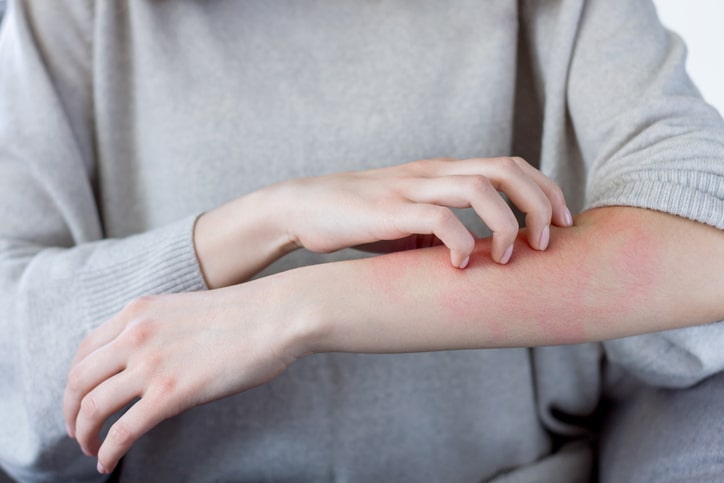Can Clothing Fabric Affect Your Skin?
January 22, 2022 by VitalSkin Dermatology

The average person might put a good deal of thought into what their clothes look like, selecting for color and style. What many of us may not always consider are the fabrics themselves. Can fabrics affect your skin? In short, yes. Clothing fabrics can have a direct impact on the health and wellness of your skin. Knowing which fabrics can impact the skin and what to look for in fabrics is an essential step in ensuring your clothes are as comfortable as they are stylish.
Dermatitis…From Clothing?
 We’ve all had the experience of wool itching our skin or a synthetic fabric rubbing us the wrong way. There is, however, a type of dermatitis you actually can develop on your skin as a result of clothing fabrics. This dermatitis, sometimes referred to as textile dermatitis, can be triggered by any number of fabrics. Typically, it is triggered by synthetics, which are less likely to allow the skin to breathe.
We’ve all had the experience of wool itching our skin or a synthetic fabric rubbing us the wrong way. There is, however, a type of dermatitis you actually can develop on your skin as a result of clothing fabrics. This dermatitis, sometimes referred to as textile dermatitis, can be triggered by any number of fabrics. Typically, it is triggered by synthetics, which are less likely to allow the skin to breathe.
Fabrics that can trigger dermatitis include:
- Rayon
- Polyester
- Nylon
- Rubber
- Spandex
Anyone with sensitive skin may want to turn to more natural fibers, such as cotton or linen.
Dyes and Chemicals in Fabrics
There may also be a less obvious culprit at play. Synthetic fabrics can also contain more dyes and chemicals than other materials. Some fabrics might contain formaldehyde resins, for example. These substances are useful in the sense that they can prevent garments from wrinkling and even repel dirt. For those with sensitive skin, however, they can also trigger skin irritation. Some natural fibers, too, such as leather, can also include dyes, glues or chemicals that impact the skin. In some rare instances, even the nickel on your pants button can trigger a form of dermatitis commonly referred to as ‘nickel’ dermatitis.
Clothing Fit Matters
It’s not always what makes up fabric that can affect skin. In some instances, it’s the fit of the close that creates irritation. That’s right, there’s a third type of dermatitis that can result from fabric— irritation dermatitis. This can occur when clothes are tight fitting or in spots where the fabric naturally rubs against the skin, such as the armpit or behind the knees.
How to Recognize if Fabric is Affecting Your Skin
What can you look for to identify if your clothing fabric is aggravating your skin? Look for red, patchy or scaly areas on the skin. You may also experience an itching sensation at the site where fabric has irritated your skin. Common areas affected by clothing fabric include:
- The underarms
- The groin
- Behind the knees
- The waist
While these are common spots to look for skin irritation, fabric can also impact your skin in any place where clothing is tight.
How to Avoid Irritation From Fabrics
The following are some easy steps you can take to limit instances of skin irritation from fabric:
- Wear natural fibers
- Wear looser designs that don’t chafe the skin
- Choose neutral tones that contain fewer dyes
- Stay away from ‘wash separately’ clothing items as they can often bleed dyes
- Avoid clothes that are ‘no iron’ or ‘dirt repellent’ as they are more likely to contain chemical irritants
When to See the Dermatologist
If you believe that you have developed a form of dermatitis as a result of your clothing’s fabrics, it may be time to visit your dermatologist. This is especially important if your skin rash covers a large area and is extremely raw or itchy. Your doctor can provide treatment for your skin condition and help you with recommendations on clothing and fabrics to wear.
If you would like to consult with a dermatologist about these issues or any issue related to the health and wellness of your skin, contact one of our dermatology professionals today.

